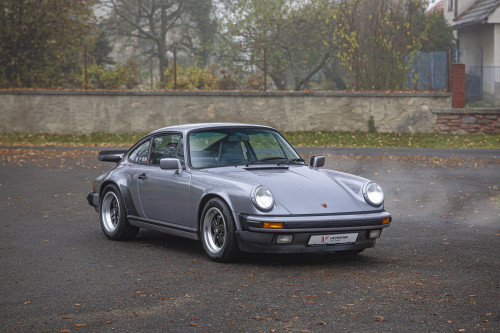BMW’s E30 3-Series spanned a decade of production and came in two-door, four-door, convertible and estate body styles. It had over a half dozen different four or six-cylinder engines, including a diesel, and models ranged from the humble 90-hp 316 to the mighty 240-kmh M3 Sport Evo. It’s the car that introduced many BMW fanatics to the marque and in terms of fun, practical, reliable, comfortable, well balanced and affordable sports cars, there are few cars quite like the E30. There’s also lots of choice when it comes to the support from the aftermarket and enthusiast community is tremendous.
The number of E30 models can be daunting, but one universal characteristic is a balanced chassis and sharp, predictable handling thanks to MacPherson struts up front and the semi-trailing arm rear suspension. One 1983 Car and Driver test declared that “its handling and roadholding are magnificent. The tradition of bad behavior at the back end of a BMW has been allowed to lapse.” And while even the newest E30s are old enough to get historic plates, today’s enthusiasts can still count on a high degree of build quality. Daily driving a sorted one is perfectly feasible. E30s are also unusual in today’s world of high-tech BMWs in that owners can do most of the maintenance themselves rather than take yet another trip to the dealer as many of today’s Bimmer owners have to.
The E30 underwent dozens of changes throughout its production run and the car varied from market to market, but one major change came in 1987 with new bumpers and other styling tweaks as well as a change from the M10 four-cylinder engine to the improved M40 and the introduction of the wagon body style. Back when German car naming schemes made sense, BMW’s model names were fairly easy to understand. For example, a 318i was a BMW 3-Series with a 1.8-liter engine and fuel injection. Six-cylinder models with BMW’s fantastic M20 engine included the 320, 323 and 325 models. Transmissions for E30 models, meanwhile, included Getrag 4- or 5-speed boxes as well as ZF automatics.
Car and Driver called the E30 a “blunt car for sharp driving”, and while it may be a bit unfair to call the well thought out and thoroughly engineered car “blunt”, it’s still an apt description for a car that’s as good at the daily commute as it is on a twisty country road.
This 3 owners example is in original condition. The car comes with the original Bavaria radio and can be also supplied with a rare Wiesmann hardtop. There are also new spark plugs, oil and filters.
This BMW comes from the Netherlands with Dutch documents. Painted 20 years ago, the steering is a little loose and it has a bit of rust on the back edges. Otherwise it is a full functional and decent car with M-tech chassis, both at front and rear.
| Production date | 23.03.1987 |
|---|---|
| Body Type | Cabriolet |
| Engine | 2.494 ccm, 170 PS, I6 |
| transmission | Manual |
| Steering | Left Hand Drive |
|---|---|
| Layout | Rear Wheel Drive |
| Color - exterior | Black |
| Color - interior | Black |
| Miles/Kilometers shown | 256.535 kms |
|---|---|
| Chassis / VIN | WBABB310102121205 |
| Location - Country | Czech Rep. |
| Location - City | Pisek |
2-door convertible body type; RWD (rear-wheel drive), manual 5-speed gearbox; gasoline (petrol) engine with displacement: 2494 cm3 / 152.3 cui, advertised power: 125 kW / 168 hp / 170 PS (DIN), torque: 222 Nm; characteristic dimensions: outside length: 4325 mm, width: 1645 mm, wheelbase: 2570 mm; reference weights: base curb weight: 1255 kg; top speed: 214 km/h (133 mph) (declared by factory); accelerations: 0-60 mph 8.2 s, 0-100 km/h 8.7 s (declared by factory)

Písek, Czechia

Písek, CZ

Písek, CZ

Písek, CZ

Písek, CZ

Písek, CZ